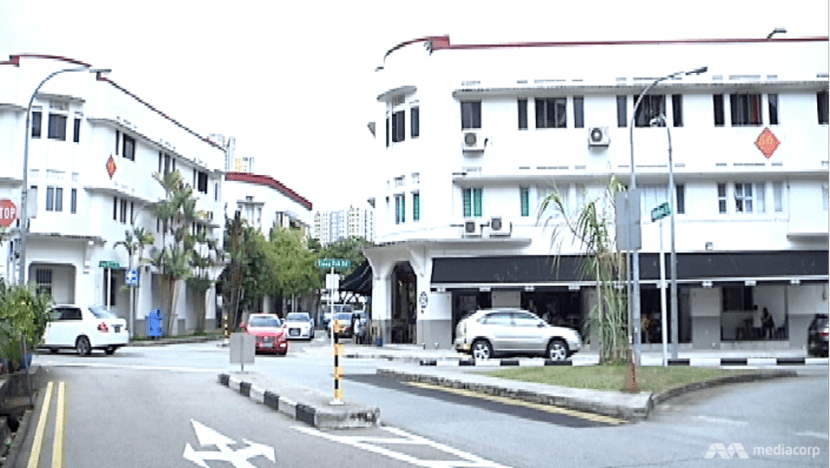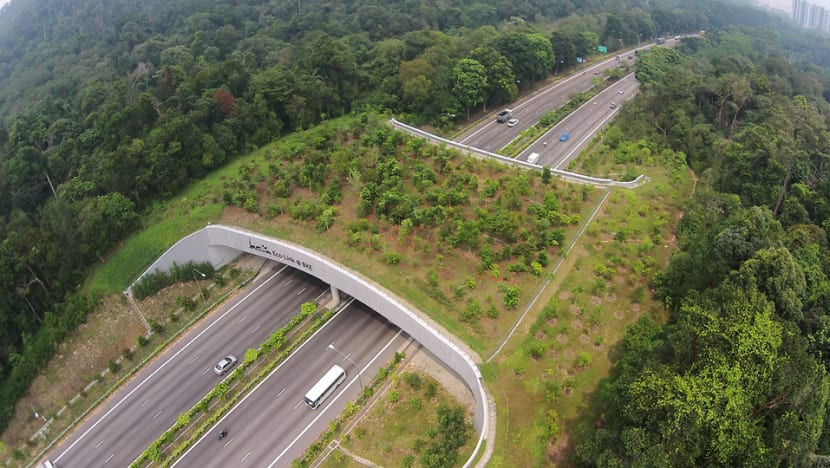commentary Singapore
Commentary: How should Singapore decide what to conserve?
In our continued chase for growth and development, we should take a more consultative approach to decide what to conserve, argues Singapore University of Technology and Design’s Pauline Ang.

Art Deco-inspired walk up flats in Tiong Bahru, the first few flats to be constructed in Singapore.
SINGAPORE: One of the key growth strategies that was identified earlier this year by the Committee on the Future Economy was to “develop a vibrant and connected city of opportunity”, with an emphasis on the word “connected”, both in the physical and digital sense of the word.
For the former, this means a continued push for major infrastructure projects that would substantially expand our international sea, air and rail connections, as well as our internal transportation networks.
EXPANSION THREATENS HERITAGE LANDMARKS
While the benefits of greater connectivity go largely undisputed, the nature of such expansion works in a densely built-up city like Singapore is disrupting the urban landscape and challenging the fate of existing buildings and places. These include architectural and heritage landmarks, as well as ordinary buildings or landscapes that have become a familiar part of our collective consciousness.
In a small country like Singapore, these landmarks are significant as physical anchors that contribute towards our sense of national identity. The rapid pace at which these familiar landscapes are erased and transformed can evoke a sense of displacement and loss.
On the other hand, the desire for continued growth and the prosperity that it brings persists in our national psyche, fuelling the continued search for a more sustainable, high-performance built environment in the face of limited land resources.
In a city where undeveloped and available land is fast disappearing, the redevelopment of existing plots of lands or settlements is becoming the only alternative.
Replacing them is a new breed of high-density residential, commercial and institutional developments, which promise greater liveability in an urban environment filled with light, air and greenery, and easy access to public transport networks. Densification, along with increased connectivity and diversity, has done much in energising the city and making our public spaces more vibrant. So they should be viewed as a positive development.
ARE DEVELOPMENT AND CONSERVATION MUTUALLY EXCLUSIVE?
This brings us to the question: Are development and conservation mutually exclusive? Do we really need to choose between one or the other? I think most people will agree that the answer is no. The more important question is how do we choose what to conserve? And how do we go about making that choice?
While there are some who stand by an anti-development or “do-nothing” philosophy, the individuals and groups who have engaged the authorities publicly on these issues have largely shown a willingness to understand the development needs and constraints at hand, and to jointly explore a range of possible solutions.
On the other side, the authorities have come a long way since the case of the old National Library building, which was demolished to make way for the Fort Canning Tunnel in 2005.
Still, the loss of the old National Library is an old wound that has not been forgotten. Up to today, many question whether the tunnel was worth it after all.
Recent development controversies involving the Ellison Building and the Central Catchment Nature Reserve show that the pragmatic, engineering-based approach still rules supreme, even if there are now some concessions for intangible factors such as heritage and nature.
Time, cost and expedience continue to be the most important factors that guide the decisions that are made, in contrast to a values-based approach, where solutions are engineered to work around the assets that we value.
In the case of the Ellison Building, a conserved building that currently stands in the path of the proposed North-South Corridor, the authorities had initially announced that part of the building would have to be demolished and later reconstructed, citing space constraints posed by other underground structures in the immediate vicinity.
Heritage groups opposed the decision on the grounds that by international heritage standards, reconstruction would only be considered “for heritage destroyed by war”, and that in this case, reconstruction would amount to a "falsification of historical artefacts".
The matter has not concluded, but subsequent discussions between the authorities and the heritage groups have reportedly yielded possible technical solutions that would allow the tunnel to be constructed without demolishing the building. This would involve providing temporary support to the structure and strengthening the foundation while the tunnel is being built.
With the Central Catchment Nature Reserve, the debate was whether the proposed Cross Island Line should pass directly under the Central Catchment Nature Reserve, or take a longer route and skirt around the reserve. Nature groups object to the direct route, citing the negative impact on existing flora and fauna.
The authorities say that the longer route will prolong the train journey by about five minutes, may require land acquisition and cost an additional S$2 billion. As with the Ellison Building, the final decision on the tunnel alignment has been deferred until environmental and engineering studies are concluded.
The fact that the authorities are willing to put their plans on hold while working out more holistic solutions with nature and heritage groups is a heartening one. However, the default quantitative approach in decision-making means that non-tangible factors do not have an equal place at the table.
HOW MUCH ARE PEOPLE WILLING TO PAY FOR CONSERVATION?
To this end, some have advocated for a comprehensive cost-benefit analysis approach, where non-tangible factors are quantified and weighed against tangible factors like cost and time.
For example, the importance of conservation could be measured by asking how much more are people willing to pay for the protection of a conserved building or a nature reserve? How much extra time are they willing to put up with for a longer or slower travel route?
This sounds like a reasonable approach, but one needs to be aware that many factors, such as the importance of light, air and greenery, are not easy to quantify. Also, it is unclear how the silent majority would choose, given that pragmatism still appears to be the most dominant trait among Singaporeans.
Putting the issue to the vote may not yield the results that heritage and nature groups would hope for, but could still be worthwhile as it would reveal what we value most when faced with a choice. The responsibility for making such difficult decisions would then be shared rather than left solely in the hands of the authorities.

TRADE-OFFS NOT UNIQUE TO SINGAPORE
Of course, conflict between development and conservation are not unique to Singapore. The ongoing development of Crossrail 2 in England, for instance, serves as a useful reference. This is a proposed rail link that would connect South East England to central London, alleviating congestion along central tube lines while generating growth along its route.
Online public consultations were first launched in 2013 to explain the proposals and to gauge the level of in-principle support for the project. Feedback on two route options were also sought. The results showed that there was overwhelming support for the project, and subsequent consultations began to focus on specific issues along the preferred route option.
As expected, a range of issues were surfaced subsequently, including heritage and environmental concerns, and the impact of construction works on property and business. These were addressed in the form of consultation reports that were made publicly available, and will continue to be addressed before the bill is tabled in the UK Parliament around 2019.
Although the process is a long drawn one, the recognition that the public and affected communities want to be heard, and the commitment to engaging them is clear. Notably, the process is accessible enough such that any resident can submit his opinion without feeling the need to provide quantifiable justifications or submit fully developed alternatives. Those who want to engage the authorities at a deeper level can also approach them directly.
While the process does not ensure that everyone will be happy with the final outcome, it provides a structured framework that ensures that all sectors are heard and given due consideration in the decision-making process.
Public engagement requires time and energy, but cannot be dispensed with when it comes to large-scale infrastructural projects that would affect all of us. The ability to encourage and engage in meaningful debate, and to give proper weight to the views of individuals and groups in the decision-making process, is the hallmark of a truly developed society.
Conservation and development need not be mutually exclusive, but what we conserve is a conscious choice that the people need to make.
Pauline Ang is Adjunct Assistant Professor at Singapore University of Technology and Design’s Architecture and Sustainable Design cluster.












